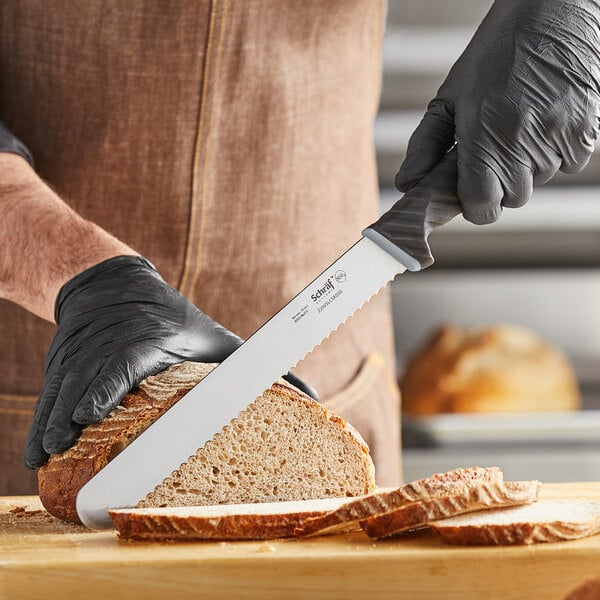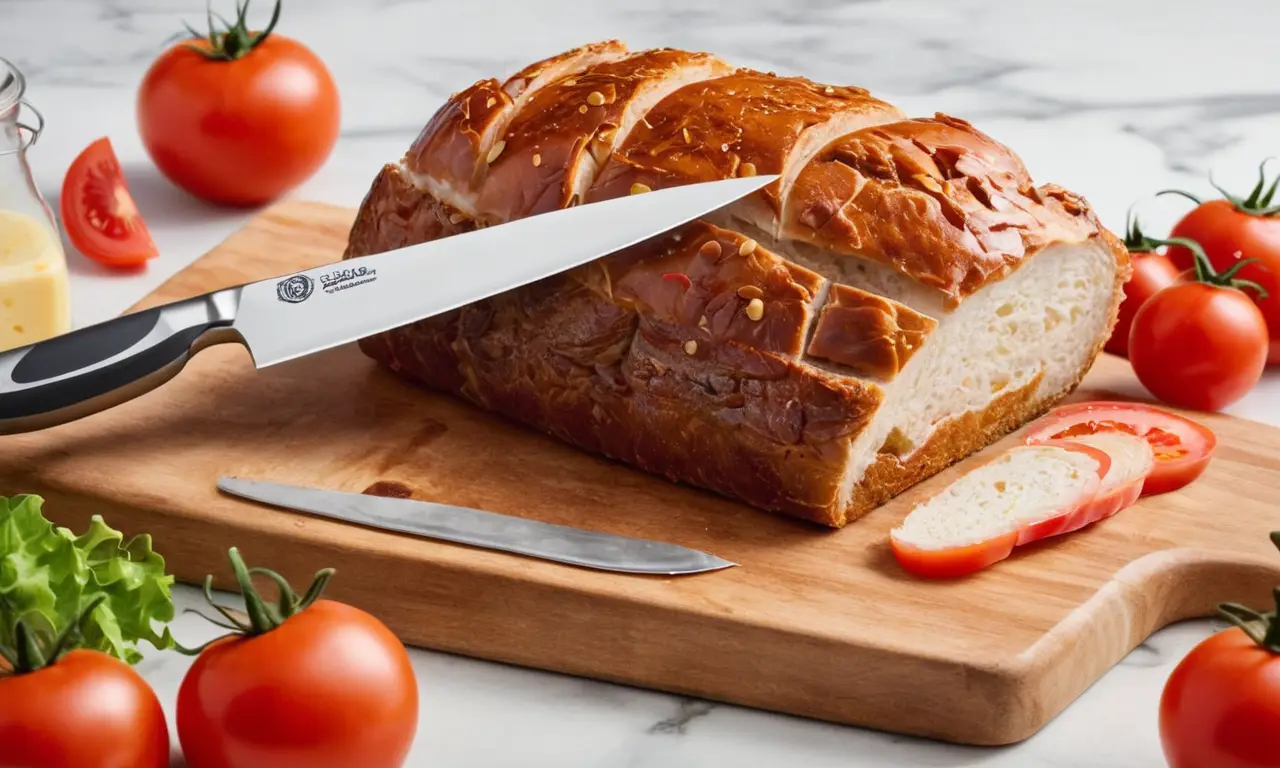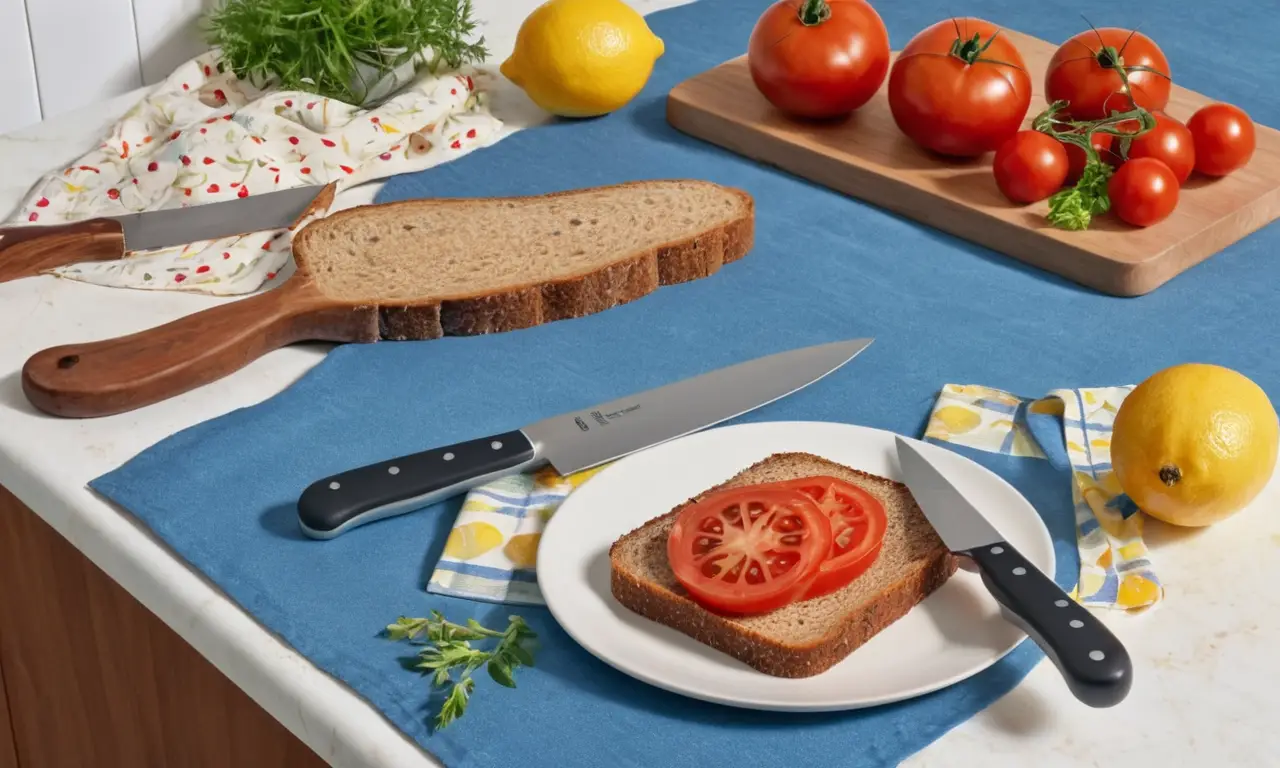
A one-sided serrated knife is an indispensable tool for any home cook looking to achieve perfect slices every time. This specialized knife features a unique, jagged edge that effortlessly cuts through tough foods like bread, pastries, and tomatoes, making it a must-have for both novice and experienced chefs.
This comprehensive guide will delve into the world of serrated knives, exploring their design, benefits, different types, proper usage techniques, and essential maintenance tips. By the end of this article, you’ll be well-equipped to confidently wield your one-sided serrated knife and elevate your culinary skills.
What is a Serrated Knife?
A serrated knife, also known as a bread knife, is characterized by its distinctive saw-like edge. Unlike a standard chef’s knife with a smooth blade, the one-sided serrated knife boasts alternating sharp teeth that create a cutting surface capable of slicing through tough crusts and dense textures with ease.
The serrations are strategically placed to grip and pull through food, minimizing crushing and ensuring clean, precise cuts. This unique design makes it ideal for tackling various culinary challenges, from slicing fresh loaves of bread to trimming pastries and even cutting ripe tomatoes without squishing them.
Benefits of Using a Serrated Knife

Investing in a one-sided serrated knife offers numerous advantages over traditional knives:
- Effortless Cutting: The serrations effectively slice through tough foods, requiring less force and effort compared to using a smooth-edged knife. This reduces strain on your hand and wrist, making slicing a more comfortable experience.
- Clean Cuts: The sharp teeth grip the food firmly, preventing slippage and ensuring clean, precise cuts. This is particularly beneficial for delicate items like pastries and tomatoes, where maintaining their shape is crucial.
- Versatility: A serrated knife can handle a wide range of tasks beyond just slicing bread. It’s also effective for cutting cakes, pastries, pizza, bagels, and even some fruits and vegetables.
Types of Serrated Knives
While the term “serrated knife” often refers to bread knives, there are various types available, each designed for specific purposes:
- Bread Knife: The most common type, featuring long, widely spaced serrations ideal for slicing through crusty loaves with ease.
- Cake Knife: Similar to a bread knife but with shorter, finer serrations for delicate cakes and pastries.
- Serrated Utility Knife: A smaller version of the bread knife, suitable for slicing sandwiches, fruits, and vegetables.
How to Use a Serrated Knife

Using a serrated knife effectively requires proper technique:
- Gentle Pressure: Apply gentle pressure while slicing, allowing the serrations to do the work. Avoid pressing down too hard, as this can damage the blade or crush the food.
- Straight Cuts: Maintain a straight cutting motion, guiding the knife with your dominant hand and using your non-dominant hand to hold the food steady.
- Sawing Motion: For tougher items like crusty bread, use a gentle sawing motion, pulling the knife towards you while maintaining a consistent angle.
Maintaining Your Serrated Knife
Proper care ensures your one-sided serrated knife remains sharp and performs optimally:
- Hand Washing: Avoid putting your serrated knife in the dishwasher, as the harsh detergents and heat can dull the serrations. Instead, hand wash it with warm soapy water and dry it thoroughly.
- Honing Steel: Regularly hone your serrated knife using a honing steel to realign the teeth and maintain sharpness.
Conclusion
A one-sided serrated knife is an invaluable tool for any kitchen, offering effortless slicing through tough foods and ensuring clean, precise cuts. By understanding its unique design, benefits, proper usage techniques, and essential maintenance tips, you can confidently wield this versatile knife and elevate your culinary creations.
